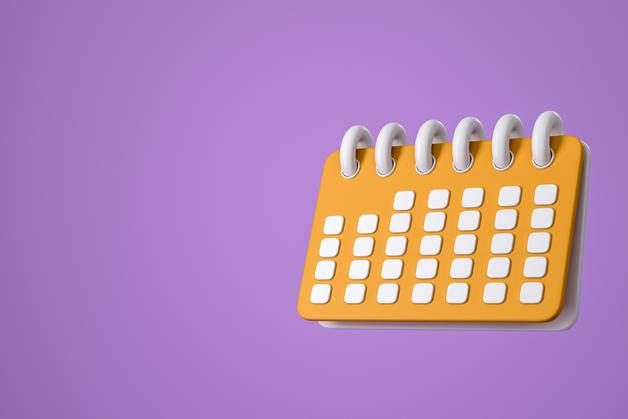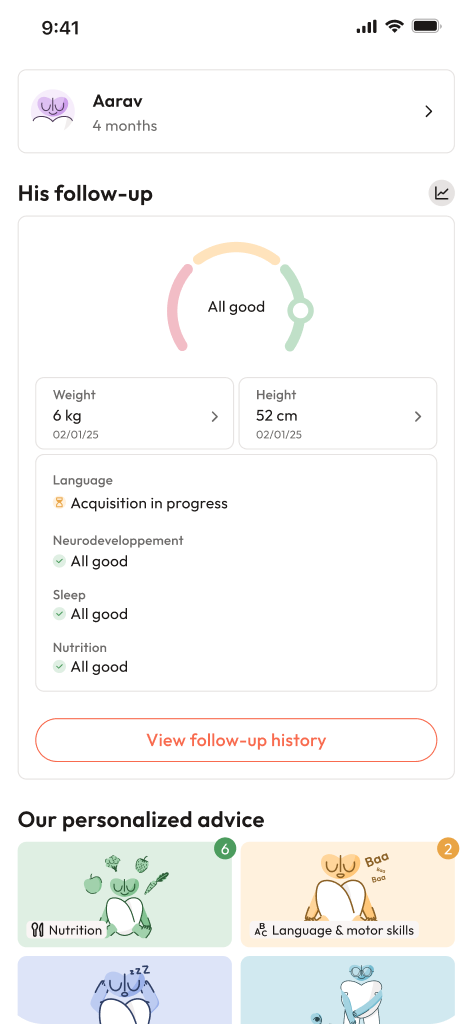Trying to keep up with all the numbers and terminology of pregnancy? The moment you see that faint pink line or receive the news from your doctor, a whirlwind of weeks, trimesters, scans, and due dates begins to swirl around. Suddenly, you’re asked whether you’re “7 weeks” or “9 weeks” pregnant, and different sources—your pregnancy app, your friend’s advice, or your doctor—don’t always agree. Ever found yourself wondering why your clinic says you’re further along than your app does, or what those cryptic notes about LMP, GA, and “weeks of amenorrhea” even mean? There it is—the classic puzzle of pregnancy weeks vs gestational weeks. For many parents, this only adds to the sense of uncertainty: Am I as far along as I thought? Will my tests and scans be on time? Is my baby growing as expected?
What if you could decode this confusion, track your pregnancy confidently, and avoid those last-minute schedule surprises when your due date shifts after an ultrasound or IVF procedure? Understanding how healthcare providers calculate your pregnancy weeks, why gestational age (GA) is the foundation for most decisions, and how tools like LMP, ultrasound scans, and even IVF lab records each play a role can be genuinely empowering. By knowing the logic behind weeks and dating, you get more than numbers—you gain control, peace of mind, and a smoother dialogue with your care team. Let’s unravel the mystery of pregnancy weeks vs gestational weeks, transform anxiety into insight, and outline all the practical steps to use this information to your advantage throughout your journey.
pregnancy weeks vs gestational weeks: what parents need to know
Essential practicalities—why the difference matters
Gestational mathematics may sound dry, but its implications ripple through every antenatal milestone. The clinic almost always marks your progress using gestational age (GA)—which counts from the first day of your last menstrual period (LMP)—even if you know you didn’t conceive until later. Conversely, apps (and sometimes family wisdom) refer to fetal age—the true duration since conception—which is about two weeks less than GA. This curious offset, typically a neat 14 days, drives those discrepancies when comparing different sources.
Imagine: A scan at 7 weeks post ovulation looks perfect in your app, but the medical file reads 9 weeks GA. Not a glitch—just two perspectives on the same story. Clinically, gestational age governs schedules for screening tests, the planning of the anatomy ultrasound, and decisions about induction, especially around term or postterm periods. Missing the mark by even a week can change everything from screening windows to treatment dosage.
Immediate, actionable to-dos
- Always jot down your exact LMP, the date you spotted that second line (pregnancy test positive), early ultrasound results, and any dates related to IVF procedures.
- Double-check with your healthcare provider: “Which date is being used for my official estimated due date (EDD)? Is this based on my LMP, an early pregnancy scan, or an IVF transfer?”
- For digital tracking, select the app setting (LMP, ultrasound, or IVF) that mirrors your official dates, and update these if your due date changes after a scan or transfer event.
Key definitions and concepts in pregnancy dating
Gestational age (GA): the clinical backbone
Gestational age (GA) is the gold standard, always counted from day one of your last period—even if fertilisation happened days or weeks later. It’s measured in weeks and days, for example, “12+3” denotes 12 weeks and 3 days. Ultrasound dating, especially during the first trimester, may sometimes shift this number, and clinics trust the ultrasound over LMP if a difference arises beyond a safe margin (usually 5–7 days). This is not capricious—it’s science: early embryonic growth is highly predictable, while recall of period dates can falter.
Fetal age or conceptional age: the real biological clock
The “true” age of your little one, often called postconception age or fetal/embryonic age, begins at actual fertilization. In standard cycles, this lands roughly two weeks after the LMP, thus creating the familiar two-week gap between gestational and fetal ages. IVF cycles, where egg retrieval, fertilisation, and transfer dates are meticulously logged, allow almost pinpoint precision—clinicians simply map lab records onto the GA framework.
Regional twists: weeks of amenorrhea (SA) and more
In medical settings, you may stumble on the term weeks of amenorrhea (SA), especially in international or translated resources. SA is a direct twin of GA, counting from the LMP, used for coordination worldwide. On the contrary, weeks of pregnancy (SG) aligns with fetal age and feels more intuitive for some parents, though less accurate for medical scheduling unless ultrasound confirms the timing.
A handy formula to remember: SA (or GA) = SG (fetal age) + 2 weeks.
Other terms decoded
- LMP: last menstrual period, the reference date for most calculations.
- EDD/EDC: estimated due date, LMP + 280 days, unless ultrasound or IVF suggests otherwise.
- CRL: crown–rump length, the star measurement from early ultrasound scans.
- EGA: estimated gestational age, a post-ultrasound adjusted figure.
- PMA: postmenstrual age, used in neonatal care, reflecting total weeks since the mother’s last period—including time after birth.
How do dating methods work? LMP, ultrasound, and conversions
Standard LMP-based calculation
Step by step, if you’re working from your last period:
- Pinpoint the first day of your last menstrual period (LMP).
- Follow Naegele’s rule: EDD = LMP + 1 year − 3 months + 7 days (or a hassle-free LMP + 280 days).
- If your average cycle isn’t 28 days, tweak accordingly: add (cycle length − 28 days) to the formula.
Be wary: Naegele’s rule assumes textbook cycles and ovulation on day 14. Irregular cycles, misremembered dates, or non-menstrual bleeding can shift the numbers, hence why many clinics start with LMP but switch allegiance to an early ultrasound for accuracy.
Dating by ultrasound: the gold standard
Between 7 and 13+6 weeks, the CRL measurement—a scan of the embryo’s length—delivers remarkable accuracy (±5–7 days). If a scan date and LMP diverge by more than this, it’s the scan number that typically becomes gospel. After all, embryos grow like clockwork early on, while human memory is fallible.
Conversion basics: GA and fetal age
A simple equation at your fingertips:
- Fetal age = GA − 2 weeks.
- GA = fetal age + 2 weeks.
- SA (weeks of amenorrhea) = GA.
Sample conversions:
- GA/SA 12+4 → fetal age ≈ 10+4.
- Fetal age 6+3 → GA/SA ≈ 8+3.
- App says fetal 7+0, clinic says GA/SA 9+0—it matches.
Calculation snapshots
- LMP is Jan 1, ultrasound at Mar 25 finds a 12+0 embryo. Suddenly, EDD may be recalculated from this scan, meaning appointments and tests could all shift a few days forward or back.
IVF and assisted reproduction: special consideration in date calculation
IVF brings new precision—and new formulas. Clinics base their dating on tangible lab events, eliminating the guesswork of natural conception. Usually:
- EDD = oocyte retrieval/fertilisation date + 14 days (aligns IVF with GA).
- Day-3 embryo transfer: EDD = ET + 263 days.
- Day-5 embryo transfer: EDD = ET + 261 days.
What makes IVF timing more reliable?
IVF cycles are clocked by microscopes and petri dishes, not memory; errors shrink to a day or two at most. CLinicians rarely modify IVF-based EDDs unless unexpected growth patterns are seen on ultrasound.
Typical scenarios
- Day-3 embryo transfer on Jan 4? EDD is automatically set as Sept 23.
- Frozen Day-5 transfer on Apr 15? Mark Jan 1 on your calendar.
When and why do dates change?
Medical reasoning behind EDD updates
If the scan’s gestational age (CRL-based) is outside expected variance from the LMP (by more than 5–9 days based on the week), the EDD is changed to the scan figure. IVF dating is only up for revision in rare cases—if scans indicate truly off-pattern growth.
What shifts, what stays?
Rescheduling impacts screening tests (NT, NIPT, glucose, anomaly scans), but documentation keeps old and new dates for the record. Past tests remain valid; future ones align to the updated EDD.
Clinical checkpoints—milestones by week
Test and scan schedule mapped to gestational weeks
- 10–13+6 weeks: NT scan, first-trimester bloodwork, most NIPT windows open.
- 18–22 weeks: Detailed anatomy ultrasound (fetal structure and dating check).
- 24–28 weeks: Gestational diabetes and anemia screening.
- 35–37 weeks: GBS swab for delivery planning.
- Ongoing: growth scans for at-risk pregnancies.
Understanding “term” categories
- Preterm: <37 weeks. NICU preparations may be needed.
- Early term: 37–38+6 weeks. Mildly higher neonatal respiratory and feeding risks.
- Full term: 39–40+6 weeks. Optimal delivery period for most.
- Late term: 41–41+6 weeks. Surveillance intensifies for placental sufficiency.
- Postterm: ≥42 weeks. Obstetric intervention considered, higher risks highlighted.
In SA-based systems, a “41 SA” pregnancy lines up with the above timing, so don’t be thrown off by a different name.
Clearing up confusion—why weeks don’t always match
App vs clinic—what’s behind the mismatch?
Each app draws from different starting points: LMP, ovulation, or embryo transfer. Some use fetal age, others use gestational age. A 2-week lag is completely normal if your app measures conception but doctors use the LMP-based standard. Regions or apps might display SA and SG—just remember, SA = GA and SG is fetal age (≈ GA − 2 weeks).
Common parental puzzles
“My app says 7 weeks, but my clinic says 9.” No error here: your app tracks fetal age; your clinic, GA/SA. Simply add two weeks for the clinical figure. If dating is ever recalibrated after a scan, apps can be adjusted to sync with the updated EDD.
Questions you can ask at any checkup
- “How did you determine today’s gestational age—LMP, ultrasound, or IVF?”
- “Is my due date official now? If it changes, will you update future plans?”
- “Can you write my weeks+days, so I can set it in my app?”
Tools, worked examples, and practical tips for parents
The value of wheels, calculators, and digital tools
Most pregnancy calculators ask for LMP, cycle length, and sometimes whether cycles are regular. Outputs may be in GA/SA or fetal/SG format; IVF calculators request lab dates and embryo stage. If a scan re-dates your pregnancy, always defer to that EDD for follow-ups.
Quick conversion sidebar
| GA/SA (Gestational Age) | Fetal/SG (Fetal Age) |
|————————-|————————|
| 8 weeks | 6 weeks |
| 12+0 weeks | 10+0 weeks |
| 20+5 weeks | 18+5 weeks |
| 36+3 weeks | 34+3 weeks |
Alt-text: “Conversion table mapping gestational age (SA/GA) to fetal age (SG).”
Three real-life worked examples
- LMP-based, natural conception
- LMP: 1 Feb 2024; 28-day cycle.
- EDD: 8 Nov 2024.
- Plan according to this until your first ultrasound.
- Ultrasound-adjusted dating
- LMP-based EDD: 8 Nov 2024.
- First scan on 28 April shows CRL = 12 weeks exactly (not matching LMP).
- New EDD: 16 Nov 2024. Clinics and apps should update accordingly.
- IVF, day-5 embryo
- Transfer: 6 Feb 2024 (Day-5).
- EDD: 24 Nov 2024 (transfer + 261 days).
Record-keeping essentials
Select an app letting you adjust for scans or IVF inputs. Save digital or paper copies of scan reports, IVF records, and write down the method and date used for your official EDD.
Navigating special and complex scenarios in dating
What if periods are irregular, or conception followed stopping contraception?
With unpredictable cycles—think PCOS or post-contraception—LMP-based dating is more like guesswork than science. Early pregnancy scan with CRL is your guiding light here. Even then, sticking with a GA/SA reference keeps your care coordinated.
Multiples, donor eggs, frozen embryos
Twin, donor egg, and frozen transfer pregnancies use known lab records for exact dating, which is critical for tracking and intervention. All babies from a multiple pregnancy sharing the transfer date share an EDD, though growth monitoring ramps up due to potential complications.
Arriving late to care, uncertainty about LMP, or unexplained bleeding
If early records are missing—perhaps since you presented later, or confusion over period-like spotting—second or third-trimester scans and biometrics guide the EDD, but margin of error broadens and careful monitoring follows.
Accurate dating means better care—timing and treatment implications
Why does it all matter?
Screening windows (NT, NIPT, diabetes testing) and treatments like antenatal corticosteroids hinge on hitting the right gestational age—not just to the week, but often to the day. Missing these windows due to miscalculation isn’t just inconvenient, it could change care strategies.
Growth and delivery planning
Every percentile curve, every “small for dates” or “large for dates” assessment depends on the true GA. Mistiming by even one to two weeks can skew surveillance, prompt unnecessary intervention, or delay vital treatments at birth.
Communicating clearly with your care team—making each week count
To smooth out misunderstandings:
- Bring your LMP, average cycle length, ovulation date (if known), date of positive test, and all scan/IVF papers.
- Share printed or digital reports showing CRL and the scan-derived GA.
- When you see “12+3” or “EGA 19w2d,” that means weeks+days GA. If you spot SA, treat it the same as GA. If lost, just ask your care provider: “Which method arrived at this figure?”
Visuals, tables, and quick reference callouts
- Timeline infographic: LMP → ovulation → fertilization → implantation → GA/SA vs fetal age (SG), with arrows indicating possible shifts. Alt-text: “Timeline from LMP through conception and differences between gestational age (SA/GA) and fetal age (SG).”
- Comparison table: LMP-based EDD, ultrasound-adjusted EDD, and IVF-based EDD side by side, brief notes added. Alt-text: “Table comparing EDDs calculated by LMP/SA, ultrasound and IVF transfer.”
- Conversion chart: As above: “Conversion table mapping gestational age (SA/GA) to fetal age (SG).”
Quick tips sidebar:
- When EDD changes, update all scheduling and digital tools you use.
- Always clarify the method of dating with your care provider—don’t hesitate; no question is too small!
- Use apps or tools that support adjustment by ultrasound or IVF data, and enter your records promptly.
Medical disclaimer: This information is for educational purposes and does not replace personalized medical advice. Discuss your specific dating and care plan with your healthcare provider.
Key takeaways
- The subtlety of pregnancy weeks vs gestational weeks stems mostly from counting methods, with GA (from LMP) being the medical default.
- First-trimester ultrasound often becomes the “official truth” when LMP and scan don’t align.
- IVF dating secures remarkable precision, using lab dates directly.
- All key screening and delivery decisions are pegged to the clinically established gestational age—not app estimates or personal guesses.
- Questions are valid, changes are routine, and alignment between your records, your app, and your clinic make for much smoother care.
- Whenever you feel lost, or if numbers on different platforms conflict, your healthcare provider is your anchor. And for extra assurance, personalised advice, and digital record-keeping, you can also download the application Heloa for free child health questionnaires and guidance.
Questions Parents Ask
Can I trust an online “pregnancy weeks vs gestational weeks” calculator—what settings actually make sense?
Many calculators are extremely useful, provided your details—like LMP, cycle length, or any scan/IVF info—are entered correctly. For best accuracy, LMP-based results require a precise cycle history. If you’ve had an early scan, choose options that allow ultrasound-based EDD entry. For IVF, input retrieval or embryo transfer dates along with embryo age (Day-3 or Day-5) for reliable figures. Be sure to check what label the calculator shows—gestational age (GA), weeks of amenorrhea (SA), or fetal age (often as SG). If only fetal age is displayed, add two weeks to match clinical numbers. Got doubts? Bring the calculator printout to your appointment—your care team’s EDD will always guide medical decisions.
Is there a fast way to convert gestational age to fetal (conceptional) age?
Absolutely—just subtract 14 days, or two weeks, from the GA to get the fetal/conceptional age. Quick cheatsheet:
- GA 6 weeks → fetal age ≈ 4 weeks
- GA 8 weeks → fetal age ≈ 6 weeks
- GA 12 weeks → fetal age ≈ 10 weeks
- GA 20 weeks → fetal age ≈ 18 weeks
- GA 28 weeks → fetal age ≈ 26 weeks
- GA 36 weeks → fetal age ≈ 34 weeks
- GA 40 weeks → fetal age ≈ 38 weeks
To be precise, for week+day conversions (say, GA 12+4), use fetal age 10+4. This trick bridges the gap between app displays and clinical notes effortlessly.
Do pregnancy symptoms actually follow “weeks pregnant” or gestational age—so will my experience match my number?
Both yes and no—symptoms often line up with your actual time since conception (fetal age). This is why many recall feeling queasy or tired sooner than the GA number suggests. Yet, all tests, planning, and medical discussions refer to GA, not conceptional age. If your symptoms seem early or late, don’t stress; variation is natural. It helps to keep a log of symptom onset, test dates, and ovulation results; sharing these lets your provider match your story to scan-based data for the most accurate timeline.










